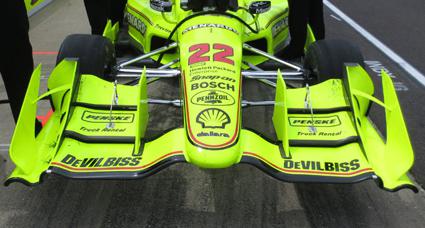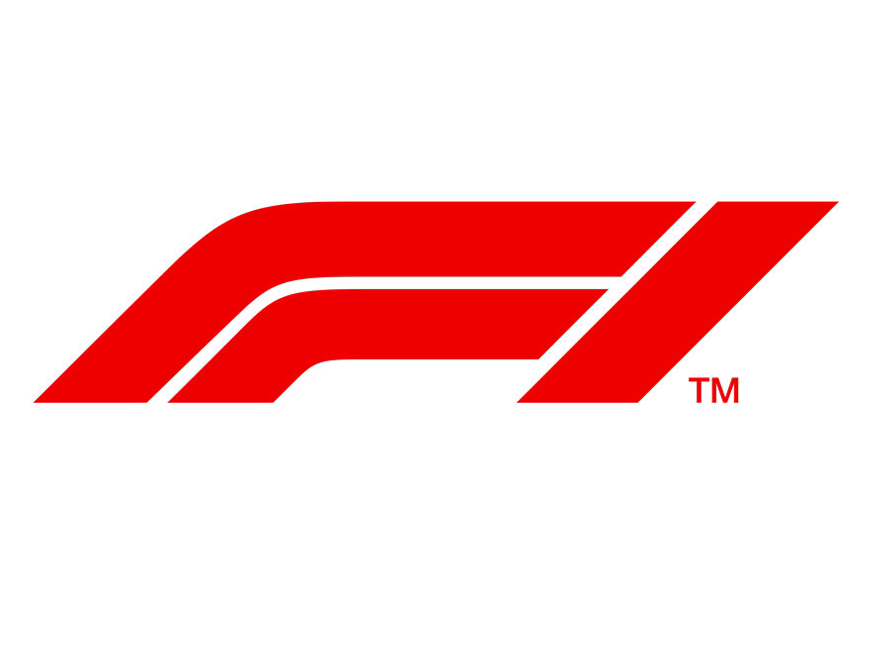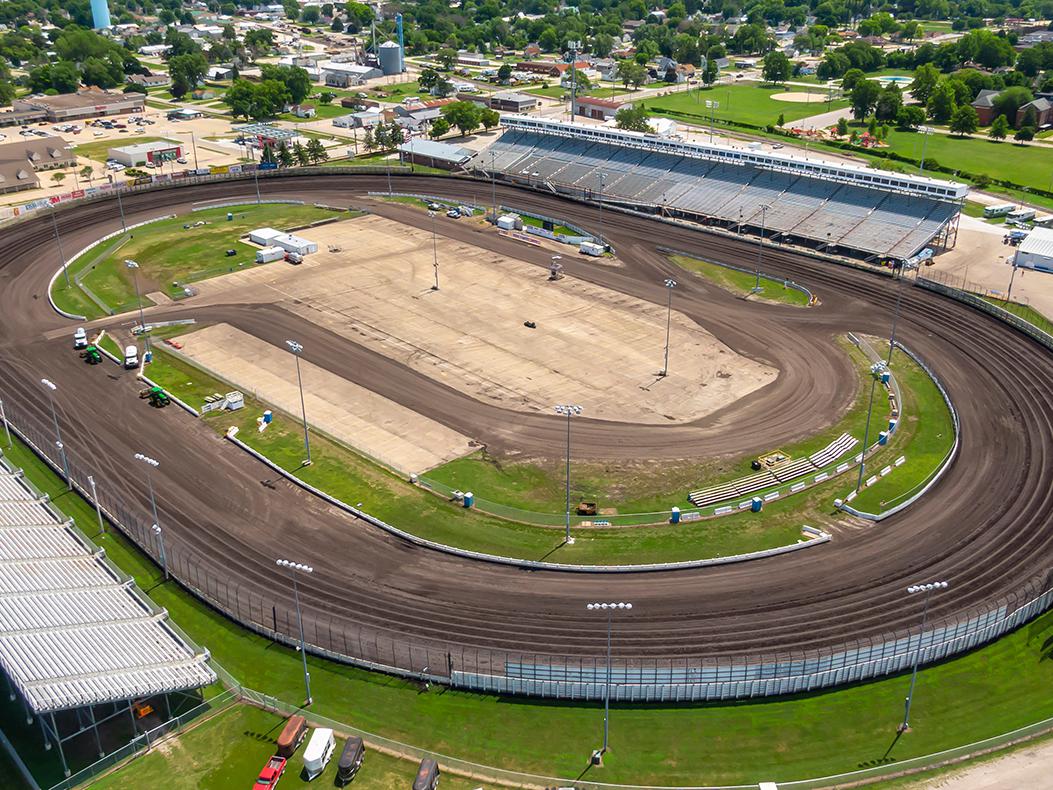Chevy Unveils New IndyCar Front Wing Design
Image

A trick piece of Chevy aerodynamics spied during pre-season testing finally appeared during an official Verizon IndyCar Series practice session.
Team Penske's entries for Helio Castroneves and Simon Pagenaud were the most notable cars to sample Chevy's alternate front-wing endplate (FWEP) pieces during the latter stages of opening practice for the Angie's List Grand Prix of Indianapolis. Pagenaud's No. 22 entry posted the fourth-fastest time with the new parts installed and Castroneves was directly behind in fifth.
The high-downforce FWEP arrangement was first seen at Sonoma Raceway in February on Castroneves' No. 3 Chevy, and was slated for an introduction between this weekend's Grand Prix of Indy or, as some drivers suggested, for next month's race on the streets of Belle Isle in Detroit.
With the added downforce, Chevy's new FWEP arrangement could be used by some teams in qualifying today as they look to generate the fastest individual laps, and for teams considering a high-downforce aero package for the race, the new FWEP could also be seen on Saturday. A limited pool of the new FWEP pieces is the only consideration for the GP of Indy; with few spares available, reverting to a front wing with the standard FWEP could be required if damage is incurred.
The innovative FWEP design takes a page from Honda's FWEP system used in 2015.
Where Honda used curved winglets attached to the wider upper wing elements (that sat atop the stock Dallara mainplane), Chevy has integrated its curved winglets into a smaller, tighter outside package. The new road course FWEP units bolt to the inner endplates that cap its upper wing elements.
One notable change to the FWEP system unveiled is an alteration to the outermost endplate. The piece tested at Sonoma featured a vertical endplate that extended close to the tire. The final version seen at the GP of Indy flares out up front and does not extend as far back towards the tire.
In addition to creating more downforce, Chevy's final FWEP pieces also offer a more robust diversion around the outside of the front tires as air flows between the new fin-like endplate, is compressed and channeled, and then routed to the left or right of each Firestone. Gurney flaps are used in two places at the trailing edge on the FWEP—atop the unit and at the side—to extract and accelerate more air from beneath the system.
The use of the new FWEPs has coincided with removing the rear tire ramps, while Chevy teams using the standard FWEPs have kept those ramps in place.
Chevy's new FWEP system is the second of three permitted aero kit updates that have been seen in 2016. The third is expected to appear once Indy 500 practice begins next week.
Team Penske's entries for Helio Castroneves and Simon Pagenaud were the most notable cars to sample Chevy's alternate front-wing endplate (FWEP) pieces during the latter stages of opening practice for the Angie's List Grand Prix of Indianapolis. Pagenaud's No. 22 entry posted the fourth-fastest time with the new parts installed and Castroneves was directly behind in fifth.
The high-downforce FWEP arrangement was first seen at Sonoma Raceway in February on Castroneves' No. 3 Chevy, and was slated for an introduction between this weekend's Grand Prix of Indy or, as some drivers suggested, for next month's race on the streets of Belle Isle in Detroit.
With the added downforce, Chevy's new FWEP arrangement could be used by some teams in qualifying today as they look to generate the fastest individual laps, and for teams considering a high-downforce aero package for the race, the new FWEP could also be seen on Saturday. A limited pool of the new FWEP pieces is the only consideration for the GP of Indy; with few spares available, reverting to a front wing with the standard FWEP could be required if damage is incurred.
The innovative FWEP design takes a page from Honda's FWEP system used in 2015.
Where Honda used curved winglets attached to the wider upper wing elements (that sat atop the stock Dallara mainplane), Chevy has integrated its curved winglets into a smaller, tighter outside package. The new road course FWEP units bolt to the inner endplates that cap its upper wing elements.
One notable change to the FWEP system unveiled is an alteration to the outermost endplate. The piece tested at Sonoma featured a vertical endplate that extended close to the tire. The final version seen at the GP of Indy flares out up front and does not extend as far back towards the tire.
In addition to creating more downforce, Chevy's final FWEP pieces also offer a more robust diversion around the outside of the front tires as air flows between the new fin-like endplate, is compressed and channeled, and then routed to the left or right of each Firestone. Gurney flaps are used in two places at the trailing edge on the FWEP—atop the unit and at the side—to extract and accelerate more air from beneath the system.
The use of the new FWEPs has coincided with removing the rear tire ramps, while Chevy teams using the standard FWEPs have kept those ramps in place.
Chevy's new FWEP system is the second of three permitted aero kit updates that have been seen in 2016. The third is expected to appear once Indy 500 practice begins next week.
 MEMBERSHIP LOGIN
MEMBERSHIP LOGIN JOIN PRI
JOIN PRI


